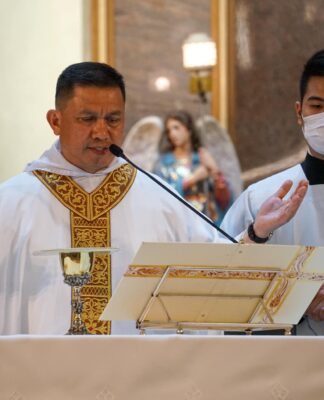TAKING the cue from the Department of Health’s (DOH) anti-dengue campaign, the UST Health Service has launched its own drive against disease-carrying mosquitoes with an efficient University-wide fogging operation.
The latest DOH bulletin listed Manila as having the highest number of registered dengue diagnoses in the National Capital Region (NCR), pushing the health department to initiate the “4-S Against Dengue” program.
In a letter sent to the Varsitarian, Dr. Ma. Salve Olalia, Health Service director, said the 185-percent increase in the number of dengue cases in NCR has prompted the University to “safeguard the health of the Thomasian community.”
“Our University is within the triangle of the dengue hot spots (in NCR) and with the (incoming) La Niña season, proactive measures have to be taken to secure UST from the disease,” Olalia said.
The DOH program includes searching and destroying breeding places of mosquitoes, self-protection, seeking immediate treatment for those who have dengue symptoms, and saying “NO” to indiscriminate fogging.
UST, for its part, drew up a plan after meeting with Larry Villegas, sanitary inspector of the Manila City Health Office.
The UST initiative is has begun with the creation of a dengue prevention and intervention checklist that will be distributed to different faculties and colleges. The UST plan also involves promotion of the use of mosquito-repellant lotion, distribution of flyers about the disease, and assessment of the effectiveness of fogging.
Olalia assured that the fogging will be done objectively and properly “as how DOH [had] directed it.”
“You just do not fog. You have to have basis in fogging,” Olalia told the Varsitarian.
She said certain conditions had to be met first before fogging was deemed necessary in the campus.
“A simulation was done wherein water in the University was tested. We put water in cans and then followed a certain protocol that rated if the water contaminated with larvae has dengue,” Olalia said.
There must be a large community of larvae before fogging, she added.
Larvae pertain to the worm-like stage of insects before evolving as adults, colloquially known in the country as kiti-kiti.
A certain breed of mosquito called Aedes aegypti is considered the main carrier of yellow fever and dengue diseases. It is found in tropical countries like the Philippines.
Olalia said an entomological team has formed, composed of representatives from the Health Service, Buildings and Grounds Office, and the sanitary inspector’s office of the Manila City Hall.
Fogging was done inside University buildings and drainage systems last April 20, April 27, and May 4.
“It is more effective compared to the monthly fogging we conducted in the past years,” Olalia said. Fogging may be repeated if larvae increase anew.
The information campaign launched by the Health Service also urges the Thomasian community to use mosquito repellant lotion and to spray environment-friendly insecticides inside rooms after classes and office hours to fight dengue. With reports from Jonathan Eli A. Libut
















